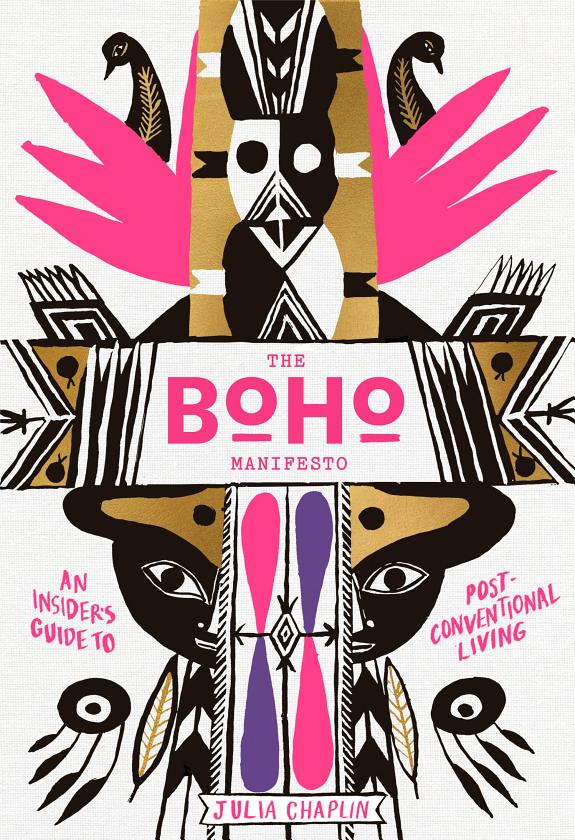Julia Chaplin’s The Boho Manifesto, published in 2015, isn’t just a book; it’s a passport to a world often romanticized but seldom understood. Chaplin, a seasoned journalist and style aficionado, delves deep into the heart of bohemian culture, not as a fleeting trend, but as a lifestyle, a philosophy, and a rebellion. In a world increasingly homogenized, The Boho Manifesto emerges as a call to embrace individuality, creativity, and a wandering spirit. It feels particularly relevant now, as many of us seek authenticity and connection in a digitally saturated world. Check it out on Amazon.
Chaplin’s book isn’t a how-to guide for achieving “boho-chic” aesthetics; it’s a journey through the diverse expressions of bohemianism across the globe. She avoids the pitfalls of simplistic definitions, instead exploring the underlying values that unite individuals who live outside the mainstream. She begins by dissecting the origins of the term “bohemian,” tracing its roots to the Romani people and its evolution through art, literature, and counter-culture movements. This historical context is crucial in understanding why bohemianism isn’t just about flowing fabrics and vintage jewelry, but about a deep-seated rejection of societal norms.
The book then shifts into a travelogue of sorts, as Chaplin takes the reader on a global tour of modern-day bohemian enclaves. From the sun-drenched beaches of Tulum to the bustling bazaars of Marrakech, she immerses herself in these communities, capturing the essence of their unique expressions. She shares intimate portraits of artists, entrepreneurs, and free spirits, revealing the diversity within the bohemian movement. Each chapter is filled with vibrant descriptions of landscapes, fashion, and artistic endeavors, painting a rich tapestry of bohemian life. It’s not merely about the aesthetic; it’s about the intentional living that underpins the look. Find it on Amazon.
What makes The Boho Manifesto so compelling is its refusal to shy away from the complexities of bohemianism. Chaplin acknowledges the criticism often leveled at the movement, such as its appropriation of indigenous cultures and its potential for superficiality. She doesn’t present bohemianism as a utopian ideal but as a flawed, evolving, and deeply human pursuit. This nuanced perspective prevents the book from becoming mere hagiography; instead, it invites the reader to engage in a critical dialogue about authenticity and cultural exchange.
Chaplin’s writing style is both engaging and insightful. She combines journalistic rigor with a conversational tone, making the book accessible to a wide audience. Her descriptions are vivid and evocative, allowing the reader to experience the places and people she encounters. She has a gift for capturing the spirit of a place or a person in a few well-chosen words. I felt like I was travelling alongside her, discovering these hidden corners of the world. The pacing is brisk, moving seamlessly between historical analysis and personal anecdotes, keeping the reader hooked.
One of the most impactful aspects of the book is its emphasis on the values that underpin the bohemian lifestyle: freedom, creativity, community, and a deep connection to nature. Chaplin argues that these values are not exclusive to any particular group or geographical location; rather, they are universal human aspirations. She challenges us to examine our own lives and consider how we might embrace these values in our own way. For me, this resonated deeply. I’ve always felt drawn to a life of less conformity, and this book gave me a new framework for understanding that feeling.
The Boho Manifesto doesn’t just describe bohemianism; it invites the reader to participate in it. It encourages us to question the status quo, to embrace our individuality, and to seek out experiences that nourish our souls. The book provides actionable takeaways without being prescriptive. It’s less about adopting a specific style and more about embracing a mindset. It encourages the reader to find their own version of bohemianism, whether it involves traveling the world or simply curating a more intentional home. Purchase it from Amazon.
The book’s success lies in its ability to connect with readers on both an intellectual and an emotional level. It’s a celebration of individuality, a call to adventure, and a reminder that life is meant to be lived fully. Chaplin’s perspective, grounded in her experience as a journalist and observer of subcultures, lends credibility to her analysis. She doesn’t present bohemianism as a fantasy but as a lived reality, complete with its joys and challenges. The book is backed by her extensive travel and interviews, adding depth to her narrative.
In conclusion, The Boho Manifesto is a must-read for anyone interested in counter-culture movements, travel, fashion, or simply living a more authentic life. It’s a beautifully written and thoughtfully researched book that challenges our preconceived notions about bohemianism and invites us to embrace the values that lie at its core. It’s more than just a style guide; it’s a manifesto for a more intentional way of being. It’s a book that stays with you long after you finish reading it, inspiring you to seek out the beauty and wonder in the world around you. Find it on Amazon here. If you enjoyed this book, you might also like Into the Wild by Jon Krakauer, or The Alchemist by Paulo Coelho, both of which explore similar themes of self-discovery and freedom.

